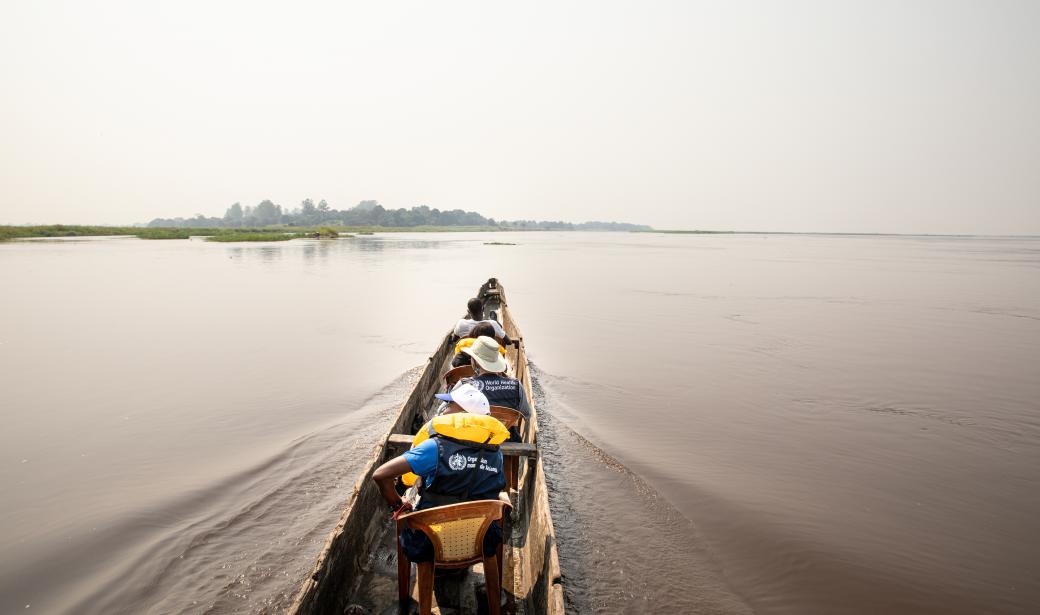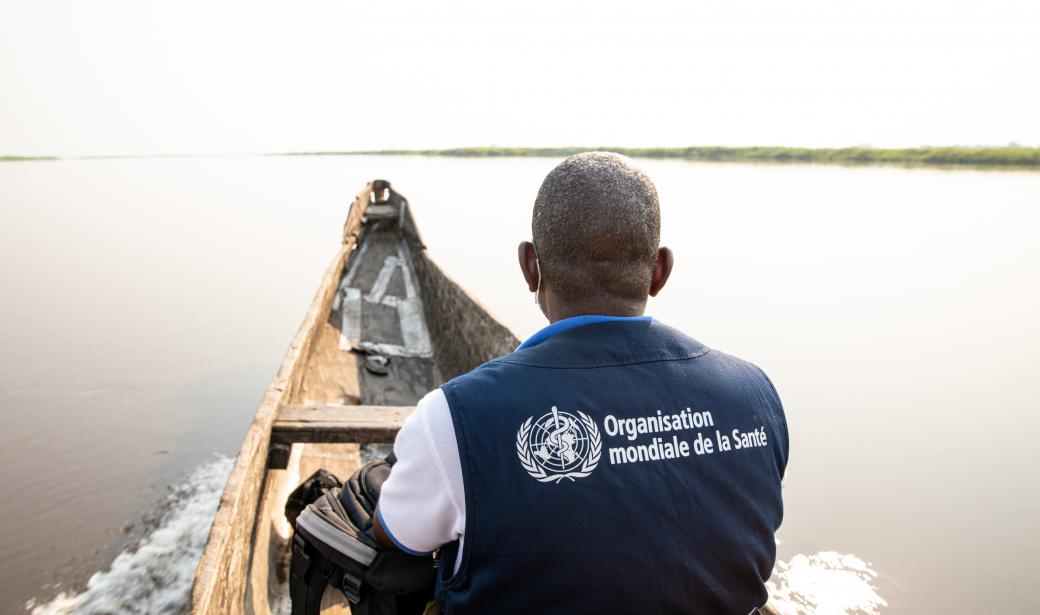WHO/Marta Villa Monge
Brazzaville – The Republic of the Congo is among 21 African countries to have rolled out the novel polio vaccine (nOPV2) to sustainably stop outbreaks of circulating polio variant type 2. As of October 2022, more than 475 million doses have been administered in the 21 African countries, and over 80% of countries that have used the vaccine saw no more polio type 2 after two vaccination rounds. This non-wild poliovirus is the most prevalent form of polio, and African countries lead the way in the rollout of the new tool to protect children.
Yameogo Charlemagne, in charge of polio surveillance at WHO Congo office noted that “one of the challenges now is to maintain the cold chain on the island, due to the multiple electricity outages over the day,” he says.
“Unfortunately, the only option for now is to bring the vaccines on a daily basis from Brazzaville to the island, which hampers the effectiveness of the campaign due to the time spent on the round trip to and from Brazzaville to collect the vaccines from the cold store,” he says.
“Unfortunately, the only option for now is to bring the vaccines on a daily basis from Brazzaville to the island, which hampers the effectiveness of the campaign due to the time spent on the round trip to and from Brazzaville to collect the vaccines from the cold store,” he says.
Once on the island, two volunteers, Mbany Guinard and Nkele Bubouanga carry out door-to-door visits, identifying unvaccinated under 5 children.
They visit different areas on the island, monitoring each house. With poor telephone network coverage, communication is difficult between them and the rest of the teams covering the island of around 12 000 inhabitants, many from neighbouring Democratic Republic of the Congo. On the first day of the campaign the two managed to vaccinate 224 children.
They visit different areas on the island, monitoring each house. With poor telephone network coverage, communication is difficult between them and the rest of the teams covering the island of around 12 000 inhabitants, many from neighbouring Democratic Republic of the Congo. On the first day of the campaign the two managed to vaccinate 224 children.
They voice satisfaction on contributing to the national campaign, noting that they monitor every house on this island to ensure every child is vaccinated.
The first case of polio variant type 2 in Congo for this outbreak was reported in 2020, hence the need for a successful campaign.
It is crucial also that the population trusts community mobilizers. Batessa Theresia does it, and she brought her one-month-old son of to be vaccinated. She proudly shows the ink on her little boy's finger as a mark that he has already taken the vaccine.
The first case of polio variant type 2 in Congo for this outbreak was reported in 2020, hence the need for a successful campaign.
It is crucial also that the population trusts community mobilizers. Batessa Theresia does it, and she brought her one-month-old son of to be vaccinated. She proudly shows the ink on her little boy's finger as a mark that he has already taken the vaccine.
Wall markings shows the number of children vaccinated in a household. The fraction on Arianne´s door indicates that 1 out of 1 child vaccinated: "I am happy. As soon as the volunteers passed by, my husband and I knew the importance of this vaccine and we did not hesitate for a second to give consent for our daughter Cecile to take it, she is also delighted and has been very well behaved," said Arianne, who had her daughter vaccinated.











